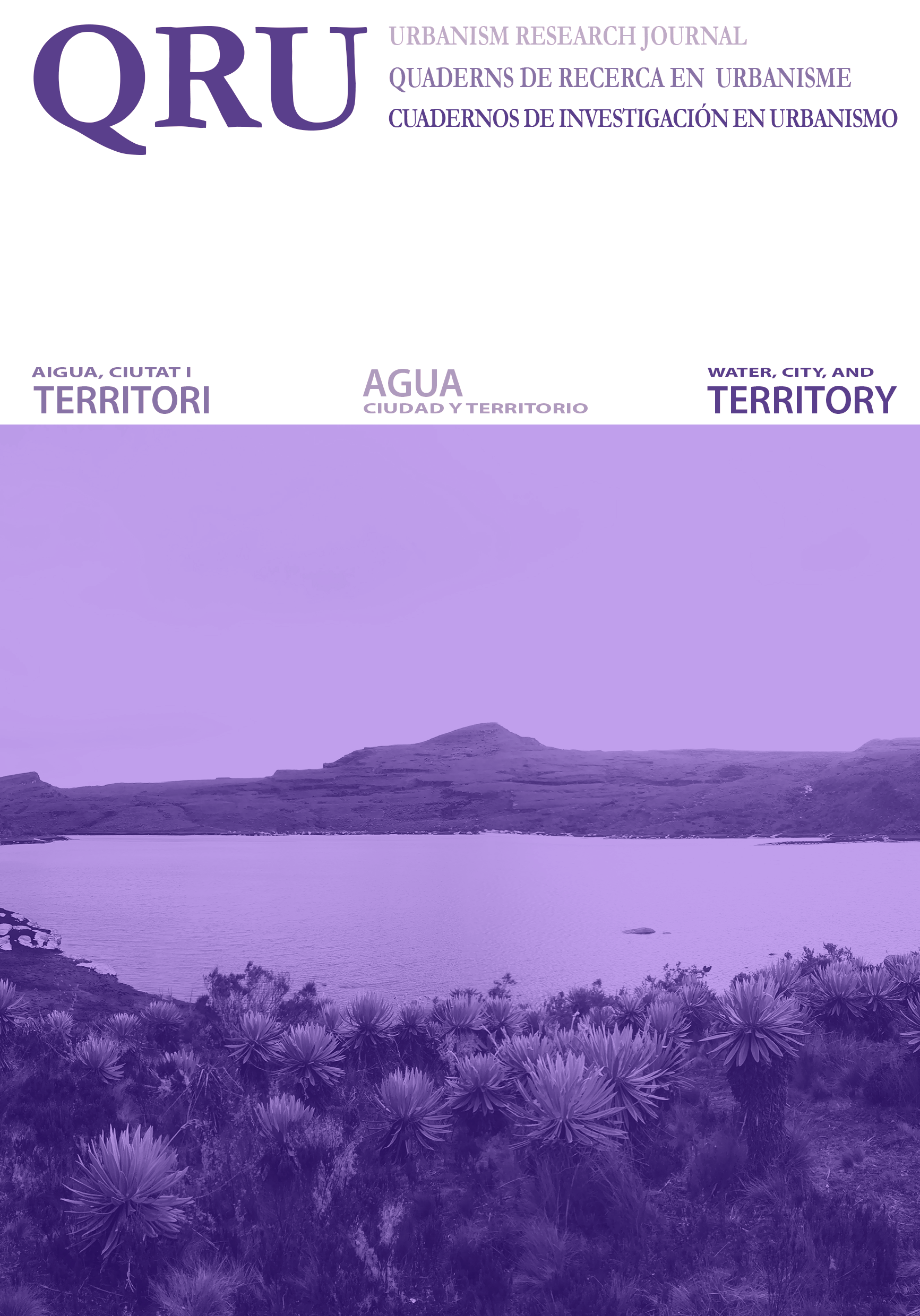Cartografía hídrico-urbana para el análisis de cuencas hidrográficas
Región Hidrológica 36, México.
DOI:
https://doi.org/10.5821/qru.11935Abstract
The relevance of a water stabilization proposal for a certain hydrological region (and the river basins that compose it), is directly related to the quality and availability of information on the management and use of water resources and the morpho-typological characteristics of the populations circumscribed within the geographic limits of the region. In this sense, within the disciplines of hydrology, hydrography, urban planning and architecture, hybrid cartographic notions can be built to visualize with greater precision the effects of anthropization on hydrographic systems, and the imminent risks of the same system towards the populations. This is possible by incorporating compatible indicators within the same cartographic projection and dimensional vision.
In the following article, a series of hybrid cartographies are organized through a multiple approach perspective (inter-scalar and multi-scalar) applied to hydrological region 36 in Mexico. These cartographies facilitate the interpretation of water use dynamics by urban and rural communities, as well as their production surfaces. The maps are useful for the analysis of alterations to the hydrological cycle, and their subsequent application to specific urban interventions for the prevention and improvement of the water network and hydrological infrastructure.
Downloads
Published
Issue
Section
License
Those authors who have publications with this journal, accept the following terms:
a. Authors will retain their copyright and guarantee the journal the right of first publication of their work, which will be simultaneously subject to the Creative Commons CC BY-NC-ND-4.0 recognition license that allows third parties to share the work provided that its author and its first publication are indicated in this journal, but they cannot be changed or used commercially.
b. Authors may adopt other non-exclusive license agreements for the distribution of the version of the published work (eg: deposit it in an institutional telematic archive or publish it in a monographic volume) provided that the initial publication in this journal is indicated.
c. Authors are allowed and recommended to disseminate their work through the Internet (e.g. in institutional telematic files or on their website) before and during the submission process, which can lead to interesting exchanges and increase citations. of the published work. (See The effect of open access).













